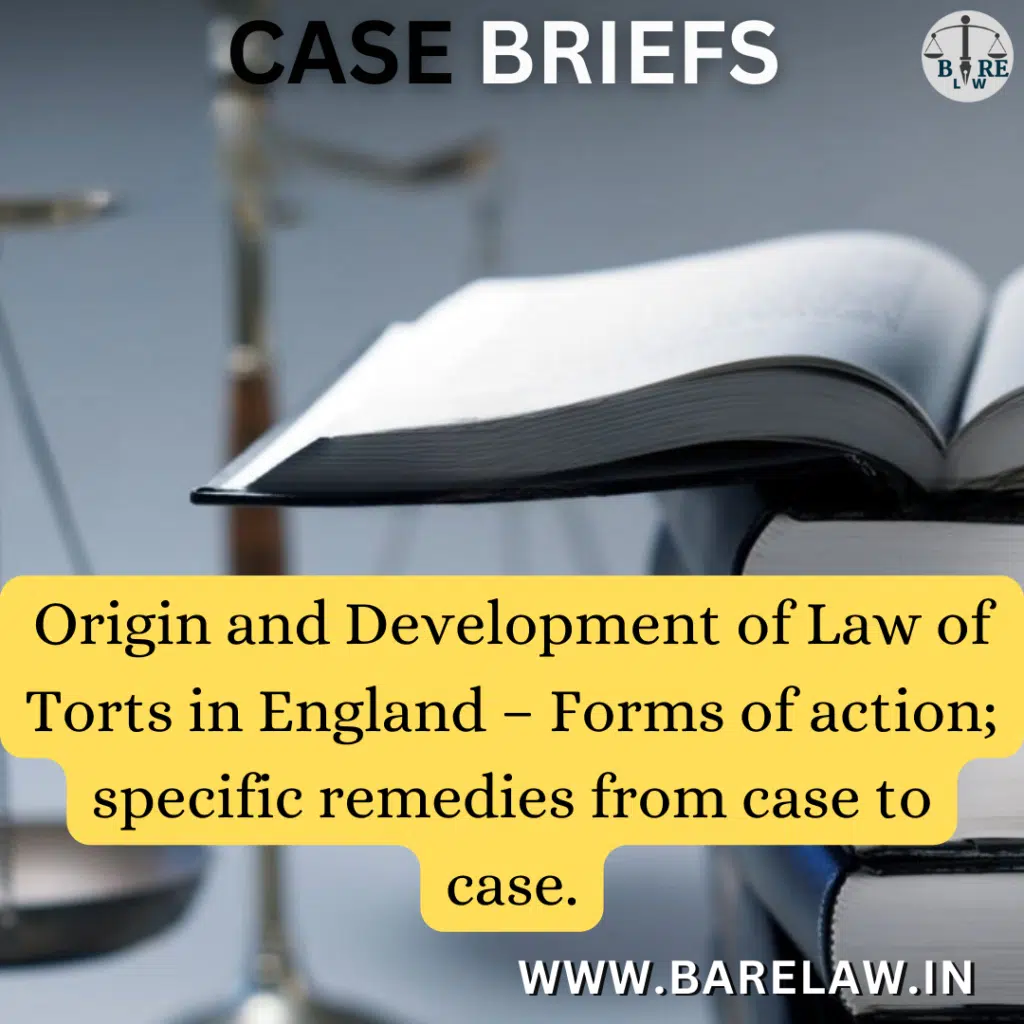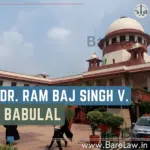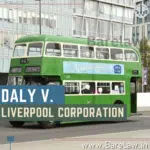
Origin and Development of Law of Torts in England – Forms of action; specific remedies from case to case.
Table of Contents
Origin and Development of Law of Torts in England
The law of torts originated in England and was brought to India via England. After the Norman Conquest, French became the language spoken in the judiciary of England and thus many technical terms in English law originated from French and tort is one of them. The term ‘tort’ is based on the concept that there are certain rights for all in the society, and the purpose of this law is to enforce rights and duties.
Forms of Action
Prior to the development of the law of torts, the English legal system was somewhat haphazard, conducted on a more-or-less case-by-case basis. After the Norman Conquest, eminent judges were delegated to travel about a given region, hearing cases and settling disputes. The forms of action that developed during this time were writs that were used to initiate a legal action. The forms of action were divided into two categories: real actions and personal actions. Real actions were used to recover land or other property, while personal actions were used to recover damages for a wrong committed by one person against another.
Evolution of Tort Law
The evolution of tort law in England can be traced back to the 19th century. The most important and most general tort is the tort of negligence, which imposes liability on someone who has not acted carefully but only if this person owed the other person a duty of care. This latter aspect is the most characteristic feature of English tort law and in a number of tort law areas it still serves as an important obstacle for liability.
Specific Remedies from Case to Case
Tort law is a body of law that addresses and provides remedies for civil wrongdoings not arising out of contractual obligations. A person who suffers legal harm as a result of another person’s wrongful act or omission may be able to recover damages in a civil court. The specific remedies available in a tort case depend on the facts of the case. Breach of contract may be redressed by liquidated damages, while tort arises from a duty imposed on persons in general and is redressible by a suit for unliquidated damages.
In India, the evolution of tort law can be observed in three phases: ancient era, medieval era, and modern era. The law of torts in India is mainly based on the principles of the common law of England. The British Empire brought Common Law and formal Tort law to India through the three presidency courts through efforts of Sir Henry Mane and Sir James Stephens and attempted to codify the law of torts in India. However, the law of torts in India is still a relatively new branch of evolving clustered law that needs to be supplemented by codifying statutes by bringing it under the ambit of one umbrella upon the basis of the maxim ubi jus ibi remedium.
Different forms of action in tort law
The forms of action were the different procedures by which a legal claim could be made during much of the history of the English common law. Depending on the court, a plaintiff would purchase a writ in Chancery (or file a bill) which would set in motion a series of events eventually leading to a trial in one of the medieval common law courts. Each writ entailed a different set of procedures and remedies which together amounted to the “form of action”. The common forms of action in the law of torts were “the writ of trespass” and ” the writ of trespass on the case/ action on the case”.
The forms of action were abolished during the 19th century, but they have left an indelible mark on the law. In the early Middle Ages, the focus was on the procedure that was employed to bring one’s claim to the royal courts of King’s Bench or Common Pleas: it was the form of one’s action, not its substance, which occupied legal discussion.
In modern tort law, there are three types of tort actions: negligence, intentional torts, and strict liability. The elements of each are slightly different, but the process of litigating each of them is basically the same. Intentional torts require an intended act by a wrongdoer against another. Some intentional torts can also be criminal. Common intentional torts include assault, battery, trespass to land, conversion, defamation, intentional infliction of emotional distress, and false imprisonment.
Conclusion
In summary, the forms of action in tort law were the different procedures by which a legal claim could be made during much of the history of the English common law. The common forms of action in the law of torts were “the writ of trespass” and” the writ of trespass on the case/ action on the case”. In modern tort law, there are three types of tort actions: negligence, intentional torts, and strict liability. The elements of each are slightly different, but the process of litigating each of them is basically the same.



